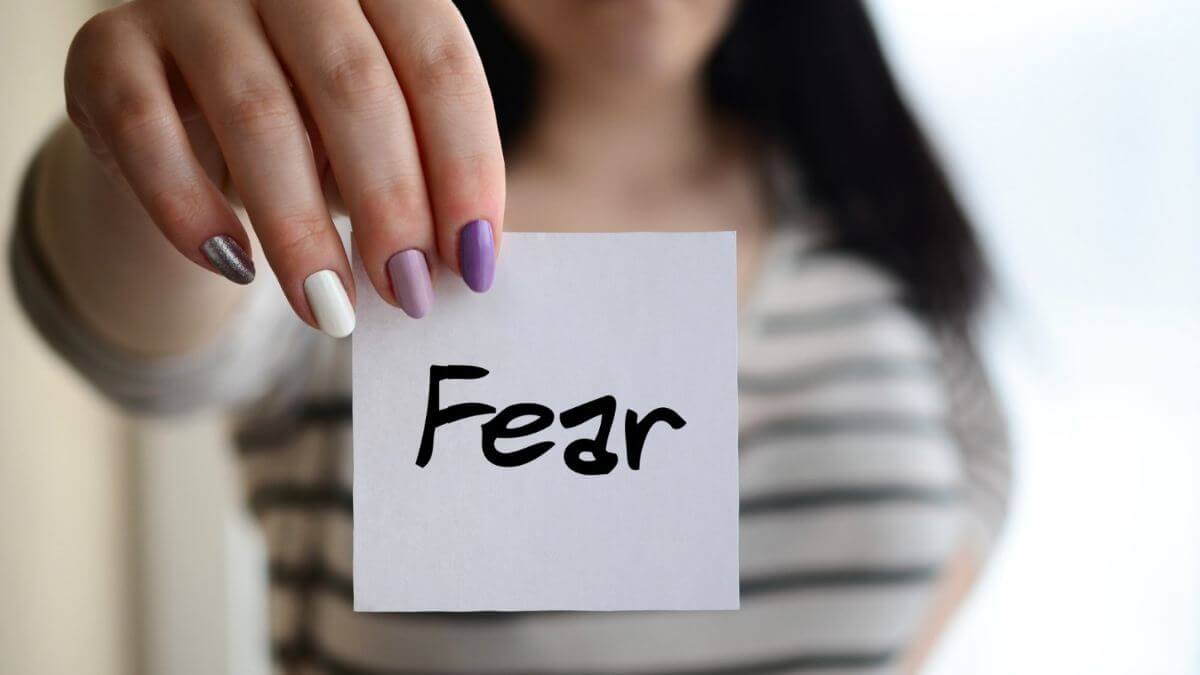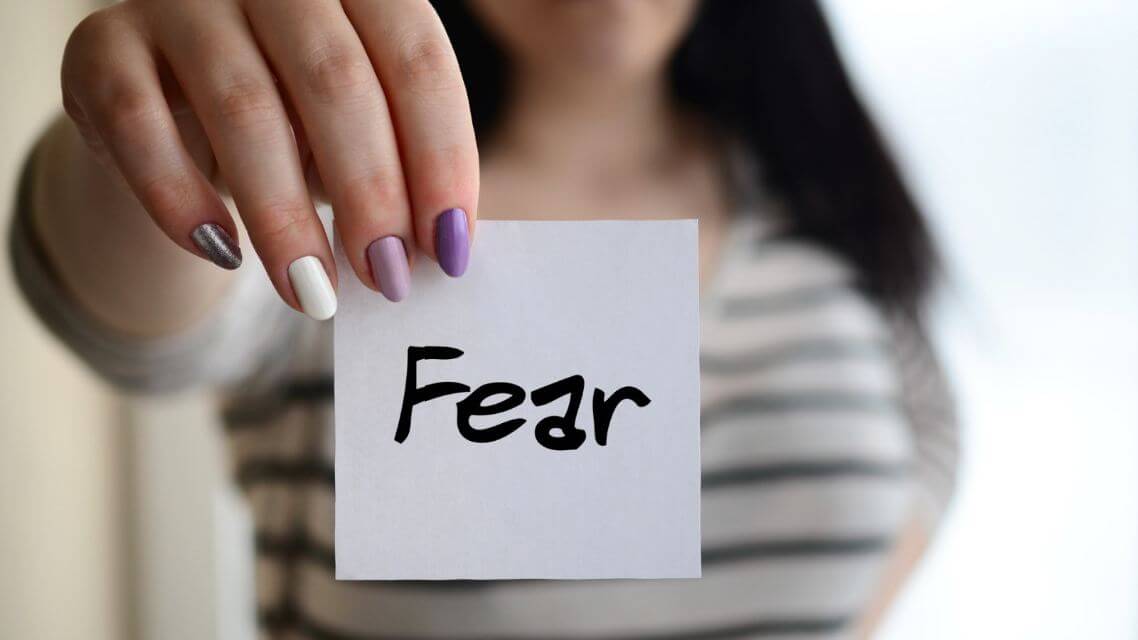
Home » Fear: I’m Afraid There’s No Way of Avoiding It!

Everyone can join in our sport. No one is left out. The level to which you participate, the frequency and the success, can all be in your own hands. I value this aspect of our sport. I love that young or old, professional or novice, full- or part-time, everyone has equal opportunities for success. Each of us has a chance. The excitement of the sport never dulls me. The adrenaline, nerves, and fear all play a role in the pregame regimen. Those emotions have changed over my time in the sport, from the naive kid to the breeder/exhibitor I am today. For the most part, the emotions and feelings are positive, but let’s face it, we all still have levels of angst which filter through our brain.
All of us had a fear or two when we were first getting started. Fear is natural. To be truthful, I still experience fear. I assume we all must. If we think back to the beginning of our participation in the sport, those moments of fear can evoke the same anxiety as the original scary encounter. Fear is out there; it is all around us, but everyone processes it differently. With some luck, over time and with exposure, we start to filter out fear and replace it with a more positive emotion—adrenaline. We learn to use fear and turn it into strength. Fear, in fact, can guide us. Fear teaches us to avoid situations and how to grow from them. Once burned, we learn through fear to avoid. Once afraid, we learn through fear to relax and handle the moments we face.
Fear, as a result, has become an interesting topic to explore. As exhibitors, breeders, and judges, we are all afraid at times, and this fear takes on a persona in the sport which comes in many forms. But what exactly is fear? Fear is the planted seed of doubt. Fear is our inner saboteur making us question everything. Fear makes us cautious. Conversely, fear can be a useful tool for success. Fear can motivate.
I believe we all share the same fearful experience of exhibiting for the first time, or the fear we felt before our first litter. In the beginning, you’re very excited, and the fear you have is the feeling of not knowing:
I don’t know how to stack a dog.
I don’t know if I have a dog of quality.
When is she due? How will I know?
What to wear… how to run… did my entry make it?
Where do I get the armband?
I don’t know what to do!
You might even have a fear of getting to the ring late! And then you get to the ring and you see all these people with such confidence and ability, and you think, “They’ve got something I don’t have.” So, now you’re a bit afraid. Some people even leave the ring in tears because they are so scared. They leave fearful of the experience and yet they come back to do it all again the next day. Fortunately for all of us, this fear goes away over time.
As a breeder, I have come to know that the more you breed the more frightening it can be. Sometimes we can cause problems in the whelping room during the delivery process through a lack of experience or knowledge, though not through a lack of compassion. We can get in the way of Mother Nature. We try to do the right things, but still, we make mistakes that can be costly. They can even cost lives.
The inexperienced person or novice breeder who is just getting started doesn’t know what they don’t know. They don’t know what they have to lose or what is at stake! I have bred many litters and I still lose sleep the week the litter is due. Initially, I was afraid, but we breeders are tough, and we keep moving on and moving forward. We are resilient. Now, after the experience of decades of litters, my fear is replaced with trepidation. It is true that the more you breed the more you know; however, fear creeps back in because you now understand enough to know how scary the process can be and how you can SCREW IT UP with some human intervention.
As your kennel continues to be successful, your bar for quality rises and it becomes more challenging to produce animals better than the previous generations. You are constantly searching for better. Breeders have a fear of not being able to continue the upward trajectory of their kennel. Will you be able to produce quality dogs over the course of generations? Does your kennel have longevity? Can the quality of your dogs stay relevant? Will they continue to improve and advance a breed?
The truth of the matter is that the higher you go with your success, the more you feel you have to lose. Your reputation, the kennel you have established, can be bruised by every loss, and those losses are even harder on the longtime, invested breeder than on those who are newer. High-profile breeders do fear being knocked off the top of their game. The higher you go, the farther to fall! It’s no different than a performer describing a paralyzing fear of disappointed their fan base. Breeders do fear failure. They are fearful that the next generation may not be as strong as the previous one.

Don’t be mistaken, all breeders question themselves. We say to ourselves, “I think this is really good, but am I fooling myself here?” This question is partly managing your kennel and partly the critical examination of your own dogs. Breeders are the first judges of their dogs. They are the first critic to take an honest look at the offspring being presented and the first to place judgement. Breeders can be fearful that the public, and the judging pool, won’t see things the same way as they do. The result is that breeders have trepidation when sending out a new generation to homes, or that next specials dog to the fancy at large. It’s not out of fear for the dog’s quality, it’s out of fear of the reception that the animal will have from judges who may or may not fully understand their virtues.
Judges, of course, experience fear too. They fear they will disappoint the exhibitors, or they may disappoint breeders sitting ringside or even disappoint themselves. When I judge, I evaluate each animal as if the goal was to use them in a breeding program. I sort the entry for breeding purposes. I think about how purposeful those animals are in a breeding program and what they have to offer the next generation. To me, it’s always a breeding choice. It’s not about showmanship—they’re not asking for it. It’s about their intrinsic value to the breed. What do these dogs have to offer the breed or to breeders of this breed? The winners have something to contribute, and you’re lucky on any given day to find a pair, a dog and a bitch, that represent the best virtues of their breed. As a judge, you hope that this happens. You might also fear that it won’t!
Behind a judge’s professional persona is a person hoping to do a good job and hoping to be respected and well received for his selections. It’s a hard balance. As a judge, you want to be open with your educated opinion; however, that might allow for exhibitors to feel they can criticize you. We can’t allow exhibitors to plant the seeds of doubt. There is a delicate balancing that’s needed between the emotional aspects of the show ring and someone’s inability to see things differently. As a judge, we don’t replace knowledge and success with doubt that is planted by someone else.
Fear plays various roles in the decisions we make in the sport of purebred dogs. We must learn to utilize our fears and doubts to go out and try to do better. Fear can challenge us to be more prepared, to do more research, to learn more breed details, and to invest more in our craft. Fear can even turn to courage when utilized properly. Eventually, we are all no longer that fearful newbie entering the show ring for the first time. Those feelings of fear go away and are replaced with anticipation and feelings of anxiousness. We find the pathway from fear, to being anxious, to finding the courage to perform, whether that be in the ring or in the whelping box. These emotions keep us going! They are essential elements of the sport. They are tools to inspire, test, and motivate all of us to give back, reach out, and grow our confidence, whether we’re showing, breeding or judging.
